Effective Strategies to Deter Possums: A Comprehensive Guide
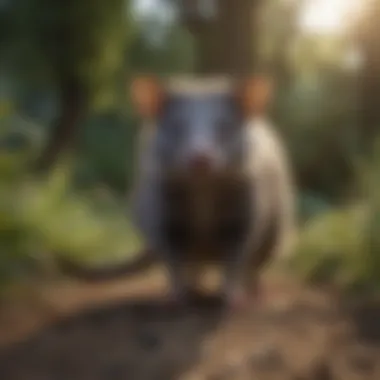
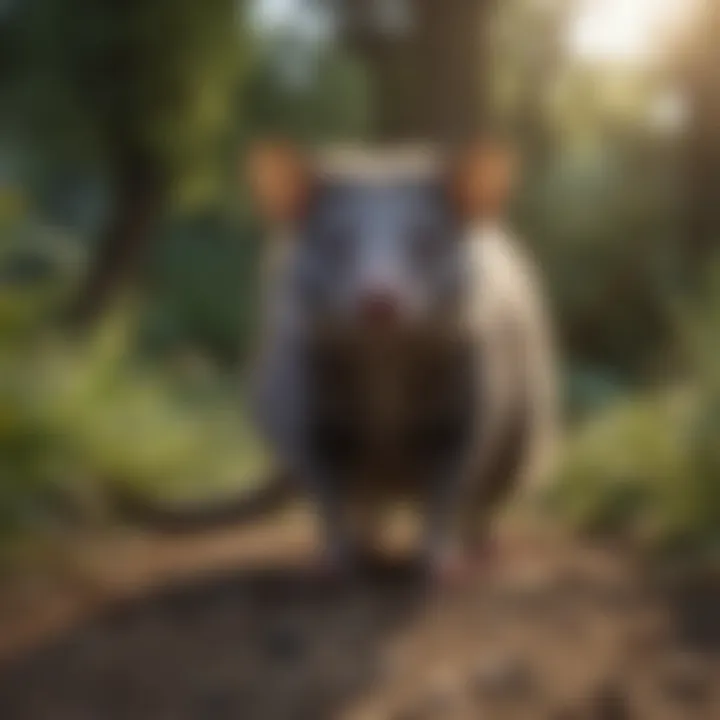
Intro
Possums can become a nuisance when they invade residential areas. Understanding them is crucial for effective deterrence. Possums are marsupials native to Australia and nearby regions. Their nocturnal habits and adaptability allow them to thrive in urban settings. Homeowners often find themselves struggling to keep these animals away from their properties. This guide presents a coherent exploration of strategies to deter possums effectively, addressing their behavior and the vulnerabilities in human environments.
Pest Identification
Detailed Descriptions of Common Pests
The common brushtail possum is the most frequently encountered species in urban areas. They have a bushy tail, large ears, and a greyish coat. Another notable species is the ringtail possum, recognized for its long, curled tail. Both species are nocturnal, meaning they are most active at night, which can lead to unnoticed infestations until damage occurs.
Signs and Symptoms of Infestations
Detecting possum presence early is key. Homeowners should look for:
- Nocturnal noises coming from roofs or walls.
- Scattered droppings around gardens or entry points.
- Scratches and damages to outdoor furniture or plants.
- Uneaten pet food left outside.
- Strong musky odors in concealed spaces.
Recognizing these signs early can prompt action before the infestation worsens.
Prevention Strategies
Home Maintenance Tips for Pest Prevention
Maintaining your property is fundamental in deterring possums. Basic strategies include:
- Secure garbage bins with tight lids.
- Trim trees and bushes that offer easy access to rooftops.
- Close entry points around roofs and walls to prevent nesting.
- Store pet food in sealed containers and bring it inside nightly.
Natural Deterrents and Barriers
Natural methods can be effective. Consider using:
- Garlic spray around entry points, as possums dislike the smell.
- Cayenne pepper sprinkled in gardens, which can irritate them.
- Predator urine, available commercially, to mimic natural threats.
Creating physical barriers, such as tall fences topped with barbed wire, can also keep them out.
Treatment Options
Overview of Chemical vs. Natural Treatments
When dealing with an infestation, property owners have options. Chemical treatments are often effective but come with risks to pets and humans. In contrast, natural treatments tend to be safer, although they might take longer to show results.
Step-by-Step Guides for DIY Treatments
For a gentle approach, consider:
- Creating a natural repellent. Mix water with garlic, cayenne pepper, and dish soap. Spray around problem areas.
- Setting traps. Use humane traps positioned near signs of activity. Consult local regulations to ensure compliance.
- Installing motion-activated lights. Bright lights can startle nocturnal animals, reducing their visits.
By understanding possum behavior and implementing preventative measures, homeowners can significantly reduce the chances of undesirable intrusions.
Overall, addressing possum problems requires a blend of proactive strategies and continued monitoring. These measures ensure peace of mind, safeguarding homes from potential invasions.
Prelims to Possums
Possums are fascinating creatures that can become unwelcome guests in residential areas. Understanding their behavior and traits is crucial for effective control strategies. This section lays the groundwork for the entire guide, highlighting why it is important to recognize possums' habits and their potential impact on your home and environment.
Understanding Possum Behavior
Possums are nocturnal marsupials that tend to be most active at night. They have a varied diet, which can include fruits, insects, and even small animals. This adaptability often leads them to urban and suburban areas in search of food. Their ability to thrive in human-altered landscapes can be alarming for homeowners. Possums are typically solitary and will retreat when threatened, but they may linger around homes if food sources are available. Recognizing their patterns can help in creating barriers to keep them away.
Signs of Possum Presence
Identifying the signs of possum activity is the first step to managing their presence. Homeowners should be vigilant for a few key indicators:
- Scat and Urine: Look for droppings, which are often dark and cylindrical in shape. Possum urine leaves a distinctive smell.
- Tracks: Possums have unique footprints resembling human hands but smaller.
- Damage to Plants: Chewing marks on leaves or missing fruit are common signs that possums have been foraging.
- Noise at Night: Scratches or movement sounds at nighttime can indicate that possums are nearby.
"Identifying these signs early can prevent possum issues from escalating into larger problems for your home and property."
Knowledge of possum presence is essential to determine the best deterrent strategies. With a clear understanding of their behavior and impact, homeowners can better protect their properties from undesirable interactions with these nocturnal visitors.
Why Keep Possums Away?
Keeping possums away from residential areas is a matter of significance for homeowners. Possums, while they are generally not aggressive creatures, can pose several challenges that are important to recognize. Their presence can lead to health risks and property damage, which can be both distressing and costly.
Health Risks Associated with Possums
Possums can be carriers of various diseases. They often come into contact with other wildlife, which makes them susceptible to infections that can be transmitted to humans. One of the notable health concerns is leptospirosis, a bacterial disease that can spread through animal urine, including that of possums. Exposure to this pathogen can occur through contact with contaminated water or soil, leading to severe health impacts.
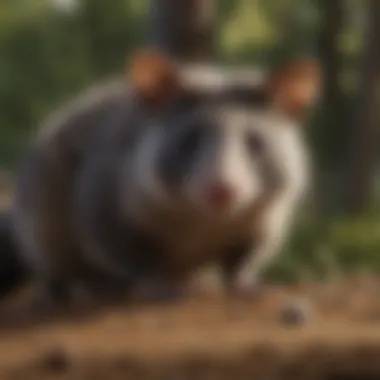
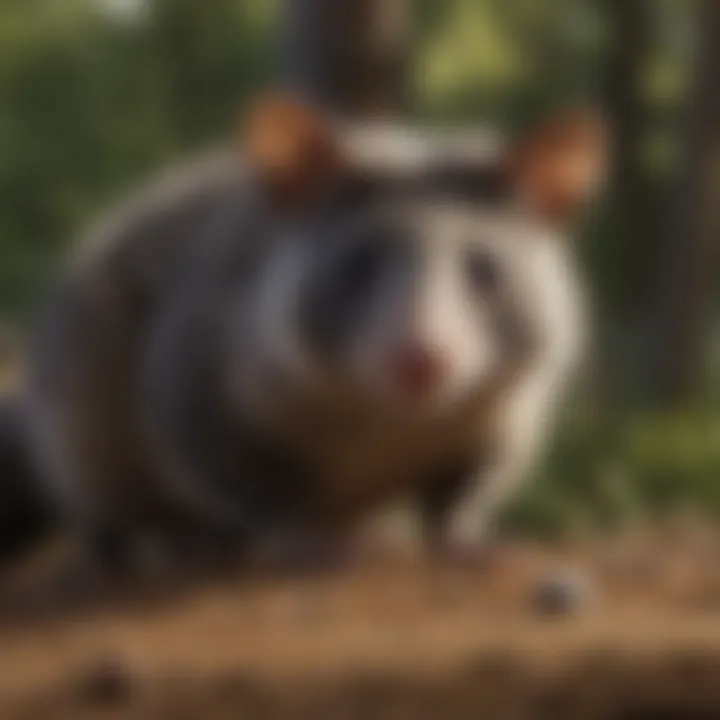
Furthermore, possums might also carry parasites like ticks, fleas, and mites. These parasites can migrate to domestic pets, putting a household's other animals at risk and potentially causing health complications for both pets and humans.
"Taking preventative measures against possums can safeguard your family from potential health risks."
Property Damage Concerns
Possums are known for their scavenging behavior, which may lead them to forage through garbage bins, gardens, and even attics. Their nocturnal habits often result in disruption during the night, which can be bothersome to residents.
In addition to noise and disturbance, possums can cause significant physical damage. They may chew through electrical wires, insulation, and even structural components of a home, leading to potential fire hazards and costly repairs.
Furthermore, if they manage to settle in a home or shed, their nesting can lead to unsanitary conditions. Possum droppings can contaminate areas where they roam, creating a need for thorough cleaning and possibly insect control due to the pests they may attract.
Overall, the risks associated with their presence make it essential to deter possums effectively. By understanding the health risks and the potential for damage, homeowners can appreciate the importance of implementing strategies to keep these creatures at bay.
Identifying Vulnerable Areas
Understanding the vulnerable areas around your home is crucial in preventing possums from entering your property. Possums are adept climbers and can navigate various terrains. By identifying spots where they can easily intrude, you can take preventative measures to reduce the chances of them becoming a nuisance. Recognizing these key areas is a proactive approach that empowers homeowners to take control of their environment. It not only secures your home but also minimizes potential health risks and property damage.
Common Entry Points
Possums have specific entry points that they favor when seeking shelter. Here are some common areas to examine closely:
- Roof Spaces: Gaps and holes in roof eaves offer easy access to attics.
- Vents and Chimneys: Unsecured vents may serve as pathways for possums.
- Windows and Doors: Check for any openings that lack screens or seals.
- Basements and Cellars: These areas can provide dark, inviting shelters for possums.
Inspecting these entry points regularly can alert you to potential issues before they escalate. Once you identify these locations, you can apply appropriate sealing methods to limit access.
Attracting Factors in Residential Settings
Possums are often drawn to residential settings due to specific factors related to food and shelter. To deter them effectively, understanding what attracts them is essential. Consider the following factors that may entice possums to your home:
- Food Sources: Open garbage bins, pet food left outdoors, and garden fruits can attract possums.
- Shelter: Overgrown shrubs and cluttered yards provide natural hiding spots for possums.
- Water Sources: Standing water, including birdbaths and pet bowls, may encourage possums to linger.
Addressing these attracting factors is important. Securing trash, maintaining gardens, and managing water sources can effectively reduce the likelihood of possums settling in.
"Preventing possums starts with knowing where they enter and what draws them in. Secure your environment to keep them out effectively."
Natural Deterrents
Natural deterrents play a crucial role in keeping possums at bay. Many homeowners prefer these solutions due to their eco-friendly nature and reduced chemical exposure. Understanding the right plants and scents can make your environment less appealing to possums, thus decreasing the likelihood of an unwanted visit. Using natural methods also harmonizes residential areas with local wildlife, minimizing harm to the ecosystem. Homeowners should consider the direct benefits, such as safety and sustainability, when implementing natural deterrents in their possession strategy.
Plants and Odors that Deter Possums
Certain plants possess qualities that can deter possums effectively. For example, rosemary, lavender, and sage are known for their strong scents that possums tend to avoid. Incorporating these plants into your garden or around the perimeter of your property can help create a natural barrier. Furthermore, essential oils like eucalyptus and peppermint can also serve as effective repellents.
Consider planting:
- Lavender: The scent is pleasant to humans but repulsive to possums.
- Rosemary: A hardy herb that requires minimal maintenance.
- Garlic: Possums dislike its strong odor, which can also help keep away other pests.
In addition to planting these, using essential oils in strategic locations around your home can amplify the effect. A few drops around entry points can act as a strong warning to possums that this area is not suitable for them.
"Utilizing nature as a means of control not only helps repel possums but enriches your garden as well."
Using Predatory Animal Scents
Employing scents from predatory animals is another compelling strategy. Scents that represent dominance, such as those from cats or dogs, can foster fear in possums. Consider using products that mimic the smell of fox or coyote. These scents can be found in spray form from pest control suppliers. Applying these around the perimeter can create an atmosphere of danger for possums, making them reconsider visiting your property.
When using predatory scents, it is essential to apply them consistently. Reapplication is necessary, especially after rain, as the efficacy may diminish. This method should be part of an overall strategy, combined with securing food sources and maintaining property cleanliness, to ensure maximum effectiveness.
Commercial Solutions
Commercial solutions play a pivotal role in managing possum populations in residential areas. While natural alternatives might seem appealing, they often lack the efficacy that many homeowners need for immediate results. In situations where possums become a recurring nuisance, exploring commercial products can provide effective, rapid, and sustainable solutions. Moreover, many commercial deterrents are designed with user-friendliness in mind, allowing homeowners to implement them without requiring specialized skills or extensive knowledge.
When selecting commercial solutions, consider several factors: effectiveness, safety, ease of use, and any potential environmental impact. It is essential to examine the ingredients used in these products, especially if there are pets or children within the household. Reliability in effectiveness is also paramount; homeowners must rely on solutions that have undergone thorough testing and have received positive feedback from users. These commercial products can vary from chemical repellants to uniquely designed traps, and understanding their nuances helps in making educated choices.
Overview of Available Products
In the market, numerous commercial products exist to help deter possums effectively. These products can generally be categorized into repellents, traps, and deterrents.
- Repellents: These are formulated to emit scents or tastes that possums find unpleasant. Common examples include:
- Traps: Trapping possums can be both an effective and humane solution. Live traps are a common choice, allowing for the safe relocation of captured animals. It is crucial to follow local regulations regarding trapping and relocating wildlife.
- Deterrents: Electronic devices and physical barriers fall under this category.
- Bittering agents: Often used in sprays, these compounds render food or surfaces distasteful to possums.
- Odor-based repellents: Products containing ingredients like peppermint oil, vinegar, or essential oils can repel possums due to their strong scents.
- Humane traps: Generally designed to capture animals without harm. They typically feature a bait chamber and a spring-loaded door that closes when the animal enters.
- Motion-activated lights and sound emitters: These devices can startle possums when they approach, making the area less inviting.
- Fencing: Installing tall fences, preferably with buried or angled edges, can be an effective preventive measure.
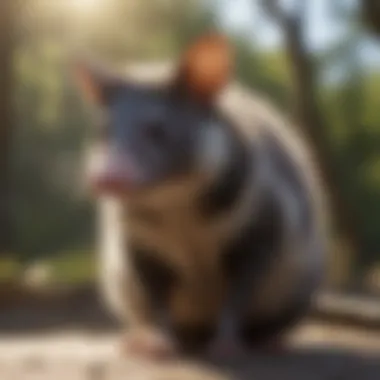
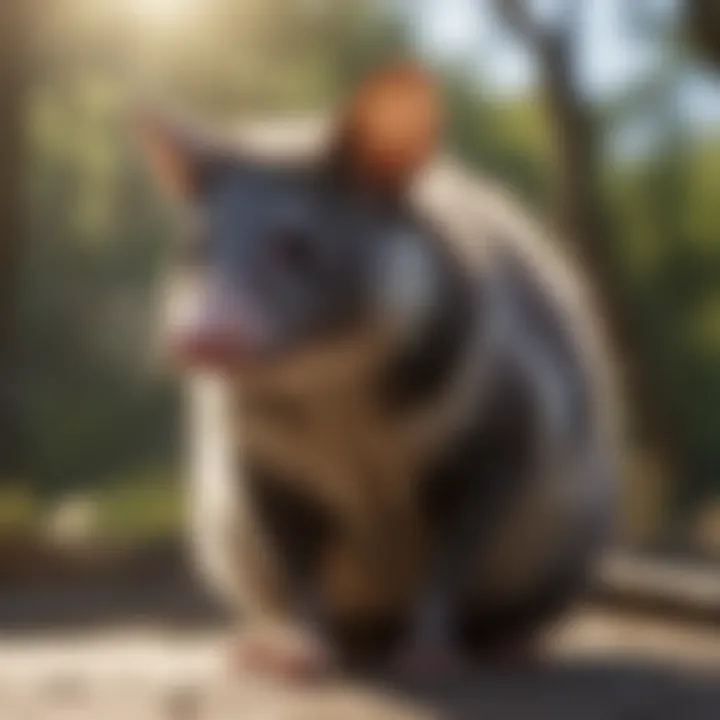
Tips for Selecting Commercial Products:
- Read consumer reviews to gauge real-world effectiveness.
- Check local regulations about trapping and using repellents.
- Ensure products are safe for pets and children.
Effectiveness of Chemical Deterrents
Chemical deterrents can offer immediate results, particularly when other methods seem inadequate. However, their effectiveness can depend on several factors, including the specific product used and the environmental context in which they are applied.
Many users report positive outcomes with certain chemical repellents that utilize scents animals find unappealing. These products often include natural compounds that act as irritants. It is important to reapply these deterrents periodically, especially after it rains or with changes in outdoor conditions.
However, consider these points regarding chemical deterrents:
- Short-term solution: Often, chemical repellents provide immediate deterrence but may not be a long-lasting fix. Continual application might be necessary.
- Potential risks: Some chemicals may pose risks to pets, other wildlife, or environmentally sensitive areas. Always follow usage instructions carefully.
- Combination with other strategies: The most effective approach involves integrating chemical deterrents with other methods for a well-rounded strategy.
"Relying solely on chemical solutions is often less effective than a holistic approach that combines multiple methods."
The successful use of commercial solutions ultimately rests on a comprehensive understanding of both the particular products available and possum behavior. Adopting these strategies not only aids in mitigating the possum problem but also fosters a safer and more secure residential environment.
Home Maintenance Strategies
Home maintenance plays a crucial role in deterring possums from invading your property. These nocturnal creatures are often drawn to environmental factors that make it easier for them to access food and shelter. By implementing effective home maintenance strategies, homeowners can significantly reduce the likelihood of possums taking residence on their property.
Understanding the Importance of Maintenance
Maintaining a clean and secure environment is vital. Possums thrive in settings that provide easy access to food sources and potential nesting spots. The main benefit of proper home maintenance is the prevention of infestations. By proactively managing your surroundings, you create a deterrent against these pesky intruders.
Securing Trash and Food Sources
One of the most common mistakes homeowners make is neglecting trash management. Possums are opportunistic feeders. They will scavenge for food, and unsecured trash can attract them.
- Use Secure Containers: Always use trash bins that have a tight-fitting lid. Metal or heavy-duty plastic bins work best. They are harder for possums to open compared to standard bins.
- Regularly Dispose of Waste: Ensure waste is disposed of promptly. Do not leave trash bags outside overnight.
- Store Pet Food Properly: If you have pets, do not leave their food out overnight. Store pet food in sealed containers to reduce access.
Maintaining clean outdoor spaces significantly decreases the attractiveness of your yard to possums.
Repairing Entry Points
Possums are excellent climbers and can squeeze through small openings. Repairing entry points is essential in safeguarding your home from these animals.
- Inspect Windows and Doors: Check for gaps or cracks around windows and doors. Ensure screens are intact without any holes.
- Seal Cracks in Walls: Identify and repair any cracks in walls, including those around utility pipes. Use foam sealant or caulking to close openings.
- Limit Access to Attics and Basements: Install barriers or netting over vents and access points. This prevents possums from entering these areas, where they can cause significant damage.
"A proactive approach to home maintenance goes a long way in ensuring peace of mind and preventing unwanted animal control issues."
By following these strategies, you can create an environment that is less inviting to possums. Reducing access to food and potential nesting sites helps ensure your property remains possum-free.
Behavioral Adjustments
Adjusting behaviors within a residential setting can take a pivotal role in deterring possums effectively. These creatures often adapt to their environment, capitalizing on human activities for easy access to food and shelter. By modifying aspects of daily life, property owners can create a less inviting atmosphere for possums.
The importance of this approach lies in its preventive nature. Rather than dealing with an active infestation or relying solely on deterrent products, homeowners can take early steps. Moreover, these behavioral changes can supplement other strategies effectively. It is a holistic approach and can enhance the overall health and security of one’s living space.
Lighting Techniques to Deter Possums
Proper lighting can be a significant deterrent for possums. These animals tend to thrive in dark and secluded areas. Introducing lighting can disrupt their comfort zones. Motion-activated lights can be particularly effective. When possums approach, sudden brightness can scare them away.
Another strategy involves maintaining consistent lighting around the property. Don't rely solely on natural light or exterior lights that are turned off at night. Use bright but soft white bulbs to minimize glaring and create consistent visibility. Position these lights where possums may typically enter your property, such as pathways or near garages.
Key Points About Lighting:
- Use motion-activated lights for sudden brightness.
- Position lights near potential entry areas.
- Maintain a consistent light presence.
Sound Devices for Deterrence
Sound devices can be effective in deterring possums as well. These creatures have acute hearing and can be easily startled by loud or continuous noises. Ideally, the sounds should be irregular and vary in intensity to keep possums unpredictably disturbed.
Ultrasonic repellents are an option worth considering. These devices emit high-frequency sounds that are unpleasant for possums but inaudible to humans. They can be placed in gardens or around the perimeters of properties.
Additionally, consider more traditional sound-making methods.
- Wind chimes can create unpredictable noises, particularly on windy days.
- Noise-making devices can be activated during the evening hours, which is when possums are most active.
While these strategies require minimal effort and capital, they could be crucial in maintaining an environment that is less attractive to possums over time. Implementing sound and lighting changes could add layers to a comprehensive strategy against possum intrusion.
Legal Considerations in Possum Control
Understanding the legal framework surrounding possum control is essential for homeowners. It is not just about removing these animals; it’s about doing so ethically and lawfully. Failing to comply with wildlife protection laws can lead to significant penalties. Moreover, ethical considerations can help ensure the surrounding ecosystem is preserved. In this section, we will explore these critical aspects that should inform your approach to possum management.
Understanding Wildlife Protection Laws
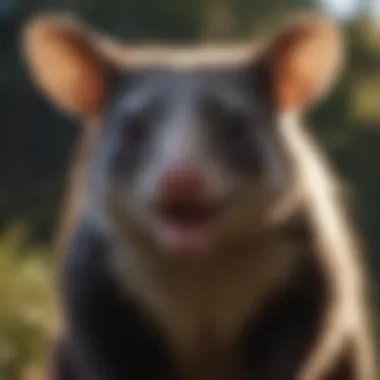
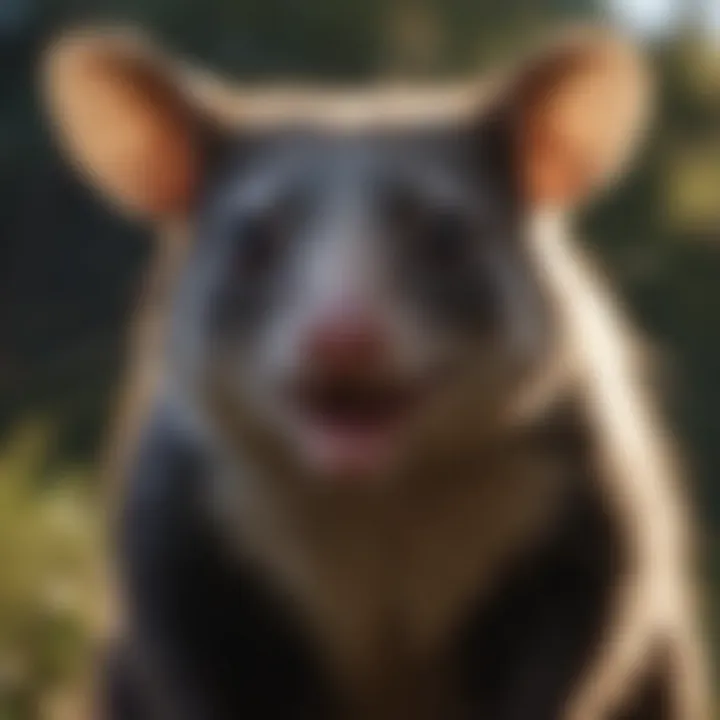
Wildlife protection laws vary widely depending on your location. In many areas, possums are considered protected species, and harm or removal might be restricted. For instance, in Australia, the common brushtail possum is protected under state laws. Understanding the specific regulations in your region is crucial. It can help you avoid fines or legal action.
- Permits: You may be required to obtain a permit before attempting any form of removal or control.
- Humane Treatment: Many laws emphasize humane treatment of wildlife, mandating that any control methods do not cause undue suffering.
Consulting local wildlife authorities or reviewing relevant legislation is always a prudent step. This act of diligence can safeguard not just the possums but also your property from potential legal troubles.
Choosing Ethical Solutions
With the myriad of options available for controlling possums, ethical solutions stand out as the most responsible. Choosing methods that do not harm the animals aligns with both legal requirements and moral obligations. Here are some ethical approaches to consider:
- Relocation: If legal in your area, consider humane traps to relocate possums far from your property. Ensure that the area you choose is suitable for them, providing natural habitats.
- Barrier Methods: Install physical barriers, like fencing, to prevent entry into gardens and trash areas. This method respects the animal's right to exist while protecting your space.
- Natural Deterrents: Utilize natural methods such as strong scents or plants that possums dislike. This encourages them to stay away without inflicting harm.
Adopting ethical solutions is not just a legal necessity; it can also foster a better relationship with your surrounding nature. When you control possums humanely, you contribute to a balance that respects both property rights and wildlife existence.
"The best approach to possum control is one that ensures both legal compliance and ethical responsibility."
When to Seek Professional Help
Dealing with possums can be a challenging endeavor for many homeowners. While it is beneficial to take preventative measures, there comes a time when professional intervention is not only advisable but necessary. Understanding when to seek professional help can ensure that the situation is addressed effectively and safely.
The importance of engaging a pest control service lies primarily in the complexity of possum behavior and the potential risks involved. Possums are known for being unpredictable creatures. Handling them without proper training may lead to injuries, not just to the possum but also to the homeowner. Furthermore, professional pest controllers are equipped with the necessary tools and knowledge to handle these creatures humanely and responsibly. They can assess the problem more accurately and provide solutions tailored specifically to the unique circumstances of your home.
Evaluating the Severity of the Problem
Before involving professionals, one should assess how severe the possum issue has become. This evaluation includes observing any recent signs of possums, like droppings, gnaw marks, or even sightings at odd hours. If the presence of possums starts to disrupt your daily life or poses health risks, it is time to take action.
Some questions to consider:
- Is there frequent damage to your property?
- Have you noticed an increase in possum activity?
- Are there health hazards associated with possum droppings or urine?
If the answers suggest a growing problem, seeking help from experts is recommended. They can provide both an evaluation and relevant strategies tailored to mitigate the issue without causing harm to these animals.
Selecting a Pest Control Service
Choosing the right pest control service is critical. Start by researching local services that specialize in wildlife management. Look for certifications, customer feedback, and the techniques they utilize. An ethical pest control service should prioritize humane methods while efficiently addressing the problem.
Consider the following factors when selecting a service:
- Experience: Ensure the service has experience with possum control, as these animals require specialized knowledge for effective management.
- Methods Used: Inquire about the methods and products they use. Avoid services that rely heavily on harmful chemicals.
- Warranty or Guarantee: A good pest control service will often provide some form of warranty on their work. This can save you from spending money repeatedly on the same problem.
- Aftercare Services: Good companies will also offer ongoing support and advice on how to minimize future encounters with possums.
By weighing these considerations, homeowners can make informed decisions that not only address current problems but prevent future ones as well.
Seeking professional help can provide peace of mind and ensure that possum-related issues are addressed quickly and effectively.
Monitoring and Maintenance
Monitoring and maintenance are crucial in ensuring long-term possum deterrence. Regular observation of your environment allows you to identify any new entry points or changes in possum behavior. Early detection can prevent larger issues, such as property damage or health risks. A consistent maintenance plan helps to reinforce previous deterrent measures and discourages possums from returning. This section discusses two essential strategies for effective monitoring: regular inspections and adapting strategies based on effectiveness.
Regular Inspections
Regular inspections of your property help pinpoint vulnerabilities that could attract possums. Inspect your yard frequently, looking for signs such as droppings, claw marks, or chewed vegetation. Checking areas near trash bins, gardens, and pet food locations is particularly important.
By establishing a routine inspection schedule, you can capture changes early. Seasonal changes may affect possum behavior as food sources become scarce. During these times, your home may become an appealing target. Keeping a detailed log of these inspections can aid in recognizing patterns over time.
Tips for Effective Inspections:
- Check gardens for signs of digging or feeding.
- Inspect trash bins for damage or disturbances.
- Increase inspection frequency during spring and fall months when possums are most active.
Adapting Strategies Based on Effectiveness
Possum prevention methods may not be universally effective. Therefore, flexibility in your approach is key. Assess the success of your current deterrents and make adjustments when necessary. You might find certain strategies work better in certain seasons or conditions. For example, a sound device may deter possums effectively in one season but be less effective in another due to differing environmental sounds.
Consider the following elements when adapting your strategies:
- Assess effectiveness regularly: Review your monitoring logs to track what works and what does not.
- Be open to trying new methods: If a specific deterrent is unsuccessful, don't hesitate to explore alternatives. Natural repellents, DIY solutions, or different commercial products may yield better results.
- Engage with your community: Local experiences may provide insights into successful deterrent techniques. Sharing information on platforms like reddit.com can provide you with user-generated recommendations.
"Effective monitoring ensures that you are not only reacting to problems but proactively preventing them from escalating."
Ending
Understanding how to effectively deter possums is essential for homeowners seeking to protect their property and maintain a healthy living environment. Possums may appear harmless, but their presence can lead to various issues, including health risks and property damage. Thus, by emphasizing specific strategies throughout this article, homeowners can take proactive steps to mitigate these concerns.
Summary of Key Strategies
- Behavioral Adjustments – Utilizing proper lighting and sound devices can make environments less appealing for possums.
- Natural Deterrents – Incorporating certain plants or smells can create inhospitable conditions for these creatures.
- Home Maintenance – Ensuring that trash is secured and entry points are repaired limits access to residential spaces.
- Legal Considerations – Being aware of laws regarding wildlife can help avoid potential fines or penalties while choosing ethical solutions for control.
- Regular Monitoring – Adapting strategies based on consistent observations of possum activity ensures ongoing protection.
Each of these strategies works together to create a comprehensive deterrent approach. Not only do they address immediate problems but they also facilitate long-term prevention.
Final Thoughts on Possum Prevention
Possum prevention should not be viewed as a one-time task but rather as an ongoing responsibility. Homeowners must remain vigilant and willing to adapt their techniques as needed. The combination of understanding possum behavior, securing vulnerable areas, and implementing various deterrents creates a robust stance against these animals.
Overall, raising awareness about the importance of possum prevention will lead to a healthier and more comfortable home environment. Being proactive with these strategies is crucial; it not only protects your property but also contributes to the ecosystem by encouraging humane wildlife management.



